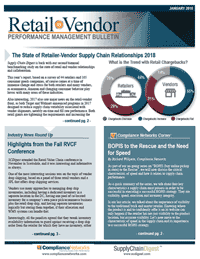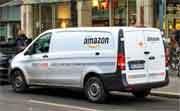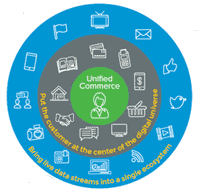 |
February 15, 2018 - Supply Chain Flagship Newsletter |
 |
|
||||||||||||
 |
|
|||||||||||||||||||||||||||||||||||||||||||||||||||||||||||||||||||||||||||||||
|
||||||||||||||||||||||||||||||||||||||||||||||||||||||||||||||||||||||||||||||||
|
|
|
YOUR FEEDBACK
Here are some additional emails stemming from Gilmore's First Thoughts column on The End of the Fossil Fuel Era?
Feedback on The End of the Fossil Fuel Era?
![]()
First of all you seem to be using the term Peak Oil in a couple of different ways – Peak oil in the sense that the output of a given well will peak early in its life and drop off at a predictable rate. Extending this to an oil field works in that the area with a bunch of wells I guess will behave in a similar manner.
Then you try to use this to talk about global peak production but that not only depends on the production of existing wells and fields but also on new exploration – the end of oil production from all the existing fields in the world would only give you an estimate of Peak production if no new production was developed. Global Peak production needs to take into consideration new production from new wells / fields and getting more out of existing fields by techniques like fracking.
The third use of Peak Oil comes in when you start talking about price – if production is slowed to barely meet demand ( thank you OPEC) then the price will go up. So a higher price may not be because production capability has peaked only because actual production has peaked.
The other major issue that I feel is lacking in the article is the fact that not all oil is used for transportation. While it is a major player some is used for electrical generation and some is used for manufacturing of things (plastic is likely the largest user so I will just use plastic for this area). While developing economies may get electric transportation something still needs to generate the electricity and if the price of oil falls because less is used in transportation people are likely to start using it to create electricity which will be in high demand from the electrical transportation and other uses in the developing countries. Developing countries will also be purchasing more things like refrigerators which need plastic and electricity thus more use of the oil.
So the article is asking will the demand for oil peak, without a detailed analysis on all of the factors it is hard to say – my gut feel is that if demand peaks the drop off will not be fast giving companies and countries time to react to the changes.
Mike Entner
Global Service Quality Assurance Manager
The Dow Chemical Company
Editor's Note:
Thanks for feedback – I love the debate.
Just couple of quick comments:
1. It’s not me but Peak Oil theory that applies it at multiple levels. Originator Hubbert in fact was the one who applied observations from individual wells to nations and ultimately globally.
2. There is no question that new sources – e.g., fracking – have upset the Peak Oil model. Hubbert did not envision this. But I can just say from my research Peak Oil is really of little concern to oil companies/countries today, its Peak Demand. I am not making such a prediction myself, but look at the chart – Royal Dutch Shell, an oil company, say Peak Demand will occur in 2025-2030. Others push it out further, but agree it is coming.
3. I agree fossil fuels – largely natural gas – will probably be used to generate electricity for some time – though solar is making gains much faster than expected. To be clear, I am no fan of solar subsidies and am hardly an anti-fossil fuel person. I also recognize the use of oil/nat gas in making chemicals/fertilizer/plastics, etc. which may continue for decades or forever. But I think as electric cars will become common, it will start to feel like the end of the fossil fuel era, which will accelerate changes in other areas, such as more solar.
As I wrote, we’re not at the end of course, but maybe not far from an inflection point that marks the beginning of the end, which we might agree is reaching Peak Demand.
And on top of all that, it’s good to be a bit provocative to stir the debate.
We’ll know a lot more before long!
Thanks again.
Dan Gilmore

![]()
I think you are quite right that electric cars and trucks are going to come on much faster than many realize, and that this will result in a great drop in demand for oil.
This will then start the beginning of the end for oil energy domination, though of course oil may still be used in applications such as plastics.
Also a fossil fuel, natural gas' future in industrial and utility applications is much brighter, and should be around for decades.
Martin Wise
Ft. Thomas, KY

SUPPLY CHAIN TRIVIA ANSWER
Q: What are logistics costs as a percent of GDP in China?
A: An estimated 14.9% in 2016. That compares to 7.5% in the US.
| © SupplyChainDigest™ 2003-2018. All Rights Reserved. SupplyChainDigest PO Box 714 Springboro, Ohio 45066 |
POWERED BY: XDIMENSION
|









 The Wall Street Journal reported that while the program is being piloted with the company's third-party sellers, Amazon envisions eventually accommodating other businesses and that Amazon plans to undercut UPS and FedEx on pricing,
The Wall Street Journal reported that while the program is being piloted with the company's third-party sellers, Amazon envisions eventually accommodating other businesses and that Amazon plans to undercut UPS and FedEx on pricing,

